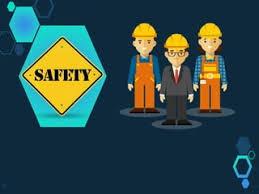Safety posters are a crucial element in promoting a safe working environment. They serve as constant reminders of the best practices and safety protocols that need to be followed to prevent accidents and injuries. In this blog post, we will explore various safety poster ideas, types of posters, and examples of effective safety posters used in different industries.

Safety Poster Guide: Types of Safety Signs
Safety signs play a crucial role in maintaining a safe environment in workplaces, public areas, and even homes. They provide essential information, warnings, and instructions that help prevent accidents and ensure that everyone is aware of potential hazards. Understanding the different types of safety signs and their meanings is vital for creating an effective safety poster guide.
1. Warning Signs
Warning signs are designed to alert people to potential hazards or dangerous conditions. They are typically yellow with a black triangle and an exclamation mark or another symbol that represents the specific danger. Examples include:
- Biohazard Signs: Indicate the presence of biological hazards.
- High Voltage Signs: Warn of electrical hazards.
- Slippery Surface Signs: Alert to wet or slippery floors.
2. Prohibition Signs
Prohibition signs inform people about actions that are not allowed. These signs are usually red and white, featuring a red circle with a diagonal line through it. Common examples include:
- No Smoking Signs: Indicate areas where smoking is not permitted.
- No Entry Signs: Restrict access to unauthorized personnel.
- No Food or Drink Signs: Prohibit eating or drinking in certain areas.
3. Mandatory Signs
Mandatory signs provide instructions that must be followed to ensure safety. They are typically blue with white symbols or text. Examples include:
- Wear Protective Equipment Signs: Indicate the requirement to wear hard hats, safety goggles, or gloves.
- Wash Hands Signs: Remind workers to wash their hands before returning to work.
- Use Safety Harness Signs: Instruct workers to use safety harnesses in high-risk areas.
4. Emergency Information Signs
Emergency information signs provide critical information for safety during an emergency. These signs are usually green with white text and symbols. Examples include:
- Exit Signs: Indicate the nearest exit route.
- First Aid Signs: Show the location of first aid kits or stations.
- Emergency Shower/Eye Wash Signs: Point to emergency shower or eye wash stations.
5. Fire Safety Signs
Fire safety signs provide information about fire equipment and what to do in case of a fire. They are typically red with white symbols. Examples include:
- Fire Extinguisher Signs: Indicate the location of fire extinguishers.
- Fire Alarm Signs: Show where fire alarms are located.
- Fire Hose Signs: Indicate the location of fire hoses.
Importance of Safety Signs
- Prevents Accidents: By warning of potential hazards, safety signs help prevent accidents and injuries.
- Compliance: Safety signs help businesses comply with occupational health and safety regulations.
- Awareness: They raise awareness among employees and visitors about safety protocols and procedures.
- Guidance: Provide clear instructions and guidance on what actions to take in various situations.
Tips for Creating Effective Safety Posters
- Use Clear and Simple Language: Ensure that the message is easily understandable.
- Include Recognizable Symbols: Use standard safety symbols that are widely recognized.
- Maintain High Visibility: Use bright colors and large fonts to make signs noticeable.
- Place Strategically: Position signs where they are most needed and easily seen.
- Regular Updates: Keep the safety signs updated according to new regulations or changes in the environment.
Safety signs are an indispensable part of any safety program. By understanding the different types of safety signs and their purposes, you can create effective safety
Safety Poster Ideas
- General Safety Tips
- Create posters with general safety tips applicable to any workplace.
- Example: “Always Wear Your Safety Gear” with images of helmets, gloves, and goggles.
- Specific Hazards
- Focus on posters that address specific hazards relevant to your industry.
- Example: Chemical safety posters for laboratories, showing proper handling and storage.
- Seasonal Safety
- Develop posters that highlight seasonal safety tips.
- Example: Summer heat safety tips, such as staying hydrated and taking breaks in the shade.
- Health and Wellness
- Promote overall health and wellness in the workplace.
- Example: Posters encouraging regular breaks and stretching exercises to prevent repetitive strain injuries.
- Safety Statistics
- Use posters to share safety statistics and highlight the importance of safety protocols.
- Example: A poster showing the number of days without an accident and goals for improvement.
Effective Safety Posters Used in Different Industries
- Construction
- Posters about PPE usage, fall protection, and machinery safety.
- Example: “Hard Hats Required Beyond This Point” and “Beware of Falling Objects.”
- Healthcare
- Posters focused on infection control, proper waste disposal, and patient handling.
- Example: “Hand Hygiene Saves Lives” and “Proper Disposal of Sharps.”
- Manufacturing
- Posters on machinery operation, lockout/tagout procedures, and chemical safety.
- Example: “Lockout/Tagout Procedures: Safety First” and “Chemical Hazard Awareness.”
- Office Environment
- Posters about ergonomic practices, fire safety, and emergency procedures.
- Example: “Ergonomic Workstation Setup” and “Fire Evacuation Plan.”
Conclusion
Safety posters are an essential tool in maintaining a safe and healthy work environment. By using a variety of poster types and focusing on relevant safety issues, you can effectively communicate the importance of safety to your employees. Regularly updating and rotating posters can keep the safety message fresh and engaging.
READ MORE
Electrical safety posters pdf

